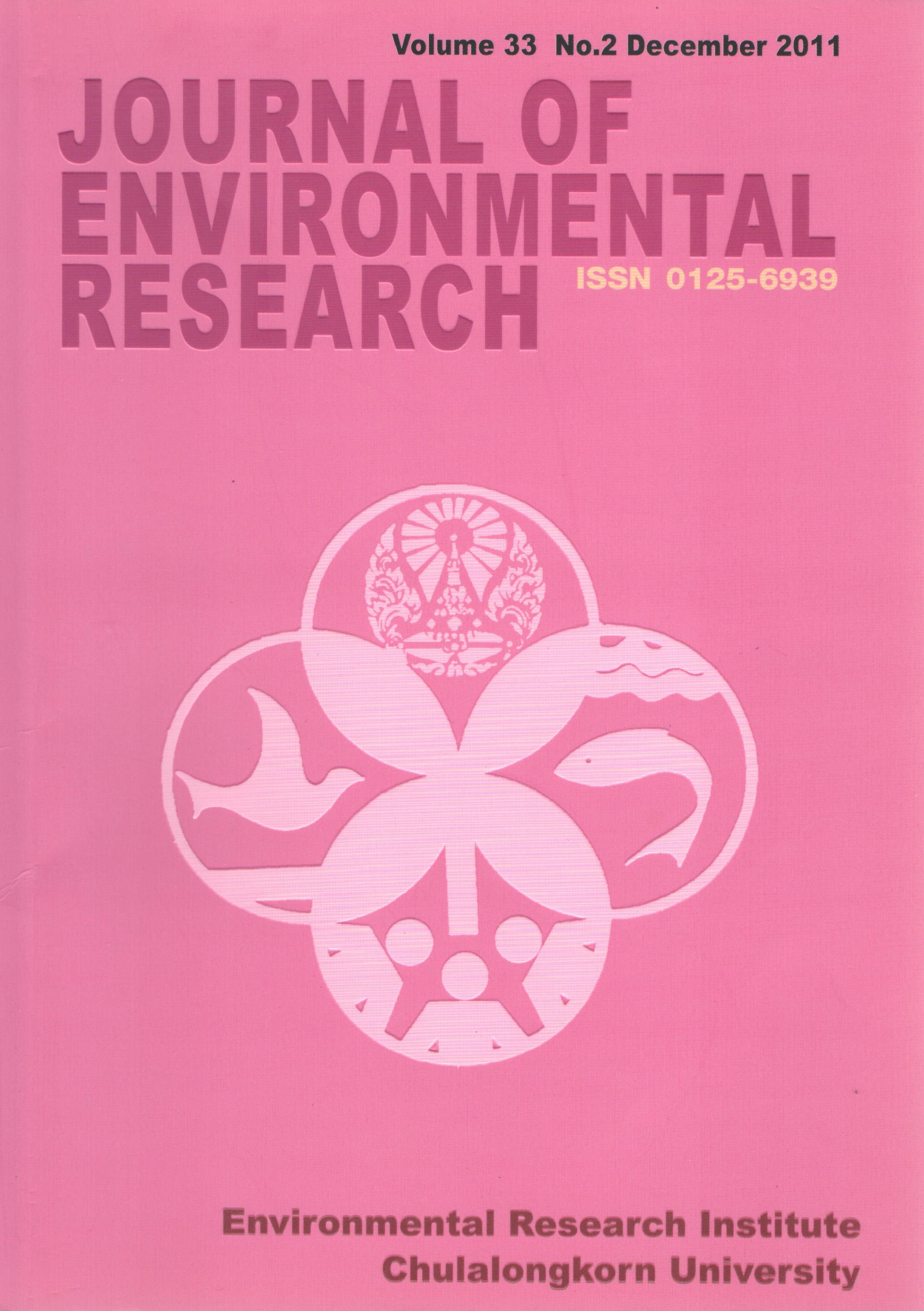Effects of Ferrocene on the Solubilization of Alkanes in a Microemulsion System
Main Article Content
Abstract
Ferrocene is a metallic additive that has been used to boost the octane number of gasoline. Even though ferrocene is not an environmental contaminant of high concern, it can be found in soil contaminated with gasoline. Due to its organometallic nature, ferrocene may affect the phase behavior of other alkanes which has been contaminated to the environment and limit their removal using surfactant-enhanced aquifer remediation (SEAR). Therefore, the aim of this work was to investigate the effects of ferrocene on the solubilization capacity of alkanes in micellar surfactant solutions. The solubilization capacity and column study of alkanes with and without ferrocene were performed in the systems of AMA and AOT at 4 % (wt) by mass as suitable surfactant system. The efficiency removals of alkanes and ferrocene (as total Fe) in column study were obtained in range of 74-95 % (wt). In this study, different parameters were studied, namely the concentrations of ferrocene, electrolytes, and the types of alkanes.
Article Details

This work is licensed under a Creative Commons Attribution-NonCommercial 4.0 International License.
Published articles are under the copyright of the Applied Environmental Research effective when the article is accepted for publication thus granting Applied Environmental Research all rights for the work so that both parties may be protected from the consequences of unauthorized use. Partially or totally publication of an article elsewhere is possible only after the consent from the editors.

